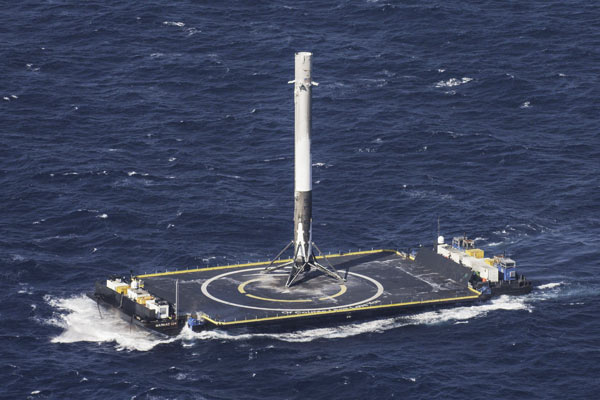SpaceX's Dragon arrives at ISS with inflatable space habitat
(Xinhua) Updated: 2016-04-11 02:32
 |
|
The reusable main-stage booster from the SpaceX Falcon 9 rocket makes a successful landing on a platform in the Atlantic Ocean about 185 miles (300 km) off the coast of Florida April 8, 2016 in this handout photo provided by SpaceX. [Photo/Agencies] |
Science experiments onboard Dragon included those that will help investigators study muscle atrophy and bone loss in space, seek insight into the interactions of particle flows at the nano scale level and use protein crystal growth in micro-gravity to help design new drugs.
The spacecraft was launched Friday from Cape Canaveral, Florida, atop the California-based company's own Falcon 9 rocket, which made history by landing the first stage of its Falcon 9 rocket on a droneship in the Atlantic Ocean for the first time.
This was SpaceX's eighth cargo mission to the ISS. It also marked the first flight of Dragon to the ISS since last June, when the Falcon 9 rocket exploded about two minutes after liftoff.
Dragon will remain connected to the ISS until May 11, when it will depart for a parachute-assisted splashdown off the coast of California, bringing almost 3,500 pounds (1,600 kilograms) of science, hardware and spacewalking tools back to Earth for further study.







